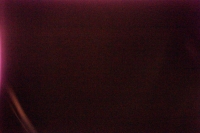Sony A7 light leak, round II of III - Results of direct-sun test suggest more testing needed…
posted Monday, March 10, 2014 at 7:27 PM EST
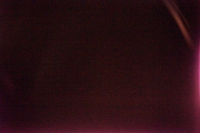
When we reported on the Sony A7 light leak issue Friday, we moved to get you information as soon as possible. Since our A7 was with Editor Mike Tomkins, a timezone ahead of us, he wasn't able to catch the sun in time for a test similar to our experiment with the D800E and 5D Mark III. Instead, he used a couple of high-intensity flashlights instead.
What we found then
We did a quick 'stress test' experiment, pitting the A7 against high-end full-frame DSLR competition from the Nikon D800E and the Canon 5D Mark III at the somewhat ludicrous settings of 30 seconds at ISO 25,600. Both cameras exhibited terrible light leaks until we used optical viewfinder covers/shutters (no surprise) and further, also taped over the lens caps and optical viewfinders
We took shots in direct sunlight with the DSLR competition and noticed some minor light leaks on 5D Mark III and more significant ones on the D800E. In contrast, the A7 had a very minor leak in the top-right of the frame under the high-intensity flashlights.
What we found today
We tested the A7 under the worst-case condition of full sunlight falling on the front of the camera, and found a whole lot more light leaking in than Mike's flashlight test gave any indication of. We also tested other cameras using the same unrealistic worst-case scenario 'stress test.'
Mirrorless competitors
The Olympus E-M1 and the Panasonic GH3 exhibited pitch black frames (save for the extreme noise) and absolutely no signs of light leak when paired with the Olympus 45mm f/1.8 lens. Notably, neither camera exhibited any leaks when we removed the tape over the lens cap. So in case you were wondering who makes the most lightfast lens caps, the data is in: The Olympus cap on their 45mm is a great one. Note: The GH3 max ISO is 12,800, so its results aren't directly comparable.
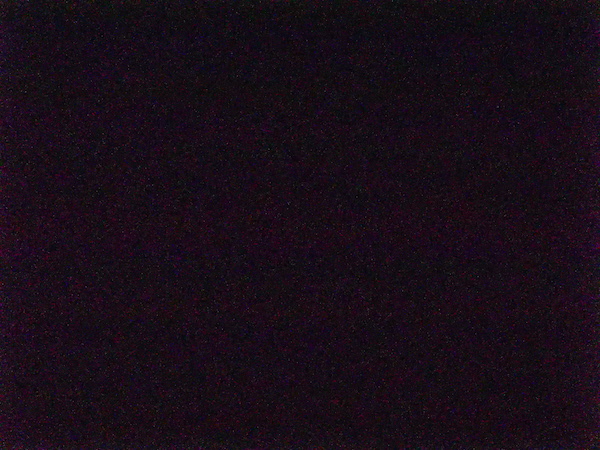
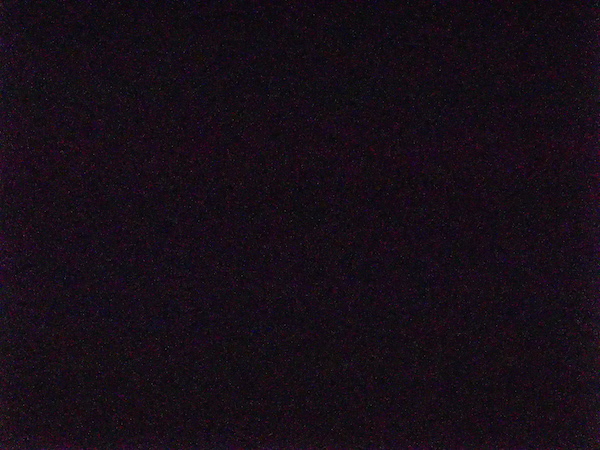
The Sony NEX-6 also had no evidence of light leaks, though the frame had a very slight color gradient.
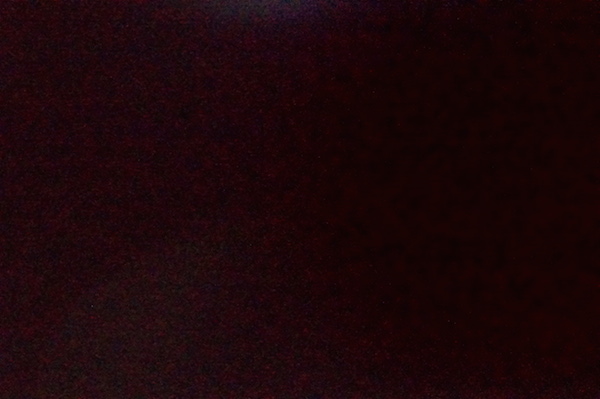
The Fuji X-T1 had a couple of odd green patterns. No idea what's going on here, and two successive shots under identical conditions were noticeably different; the one shown here was about twice as bright as the other.
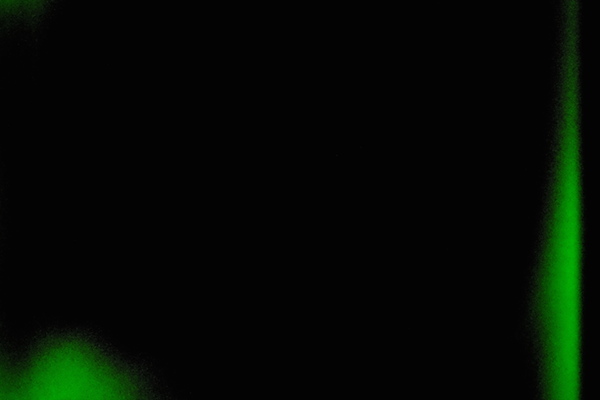
Based on these results, we'll leave the E-M1, GH3 and NEX-6 out of any further testing. If they did this well with wildly unrealistic conditions, there's no sense in giving them a chance in more realistic tests. Subject to Mike's availability on a trip to Hong Kong, we'll continue to evaluate the X-T1. (He has the X-T1 along with him, lucky guy!)
DSLR competitors
As we mentioned previously, we subjected the D800E and 5D Mark III to our stress test. The results follow:
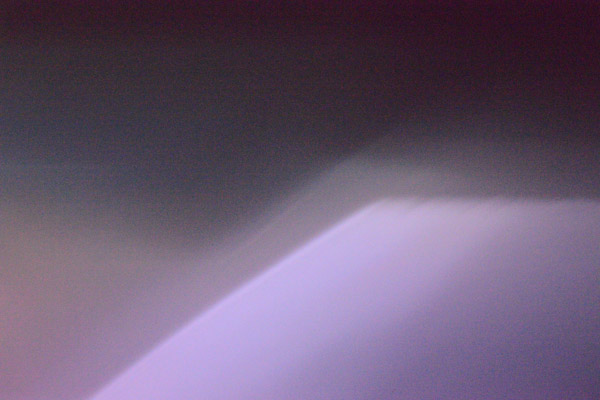
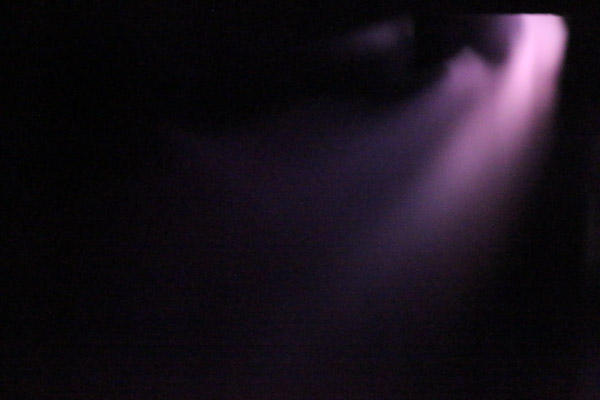
The Nikon Df had a very faint leak, which we're confident wouldn't affect performance.
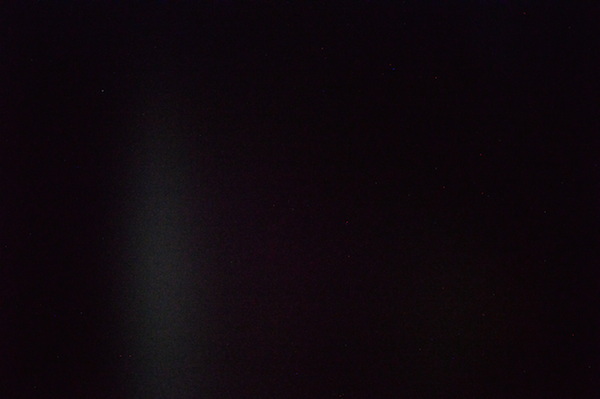
The Pentax K-3 and K-5 were entirely lightfast.
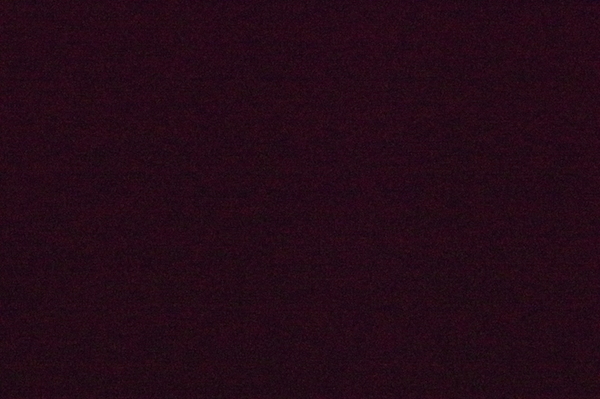

An updated (daylight) Sony A7 stress test
As some of our more astute readers noted, 30 seconds at ISO 25,600 is an absurd exposure. Results at this level are helpful to eliminate the need for further testing, but less useful to determining the effects on real-world shooting.
Nevertheless, we can now update our results with a stress test of the A7 in sunlight. And they indicate there's a need for additional testing.

That's obviously a lot worse than what we saw in the super-bright flashlight test, and is arguably worse than what we saw even from the D800E. Of course, we're still talking about an exposure that's equivalent to 128 minutes at ISO 100, something even the most rabid fans of daylight long-exposure photos are unlikely to undertake. In a third installment on this story, we'll look further at how the A7 and other cameras perform in more normal exposures (up to perhaps a few minutes at ISO 100.)
What's interesting is that, whereas light leaks for other cameras come from either the lens/flange interface or the optical viewfinder, the light leaks for the A7 appear to be associated with the orange styling detail between the camera body and the flange. Specifically, the lower left portion of the orange ring, at least on our sample. We know this because Mike Tomkins carefully applied black tape to various parts of the lens/flange/body assembly. While the vast bulk of the light leak in our sample came from the joint between the orange styling detail and the body, the image of that leak was rather different than what we've seen posted elsewhere on the Internet. Most examples we've seen online show a streak in the upper right corner as seen above, but not the other artifacts we observed. It turns out that the upper right-hand streak was what remained after Mike masked the orange detail/body gap, and went away only when he masked-off the joint between the flange and the lens itself.
An example from a real-world application
As we've said repeatedly, the exposures shown above are completely unreasonable ones, corresponding to conditions that we can't imagine any photographer shooting under. So what practical impact does the light leak have? It turns out there is at least one group of photographers out there, who actually are impacted by this. A devoted coterie of long-exposure fans routinely snap very long-exposure photos under daylight conditions.
IR reader Satoru Murata is one such longtime daylight long-exposure fan, using very long exposures to achieve motion blur effects in cloudscapes. Using 12-19 stops(!) of ND filtering, his is clearly a discipline at the outer edges of the exposure-to-ambient light curve, but there's little arguing with the beautiful shots he produces this way. He was nice enough to allow us to share one of them below, that shows how the A7R's light leak affects the kind of very long daylight exposures he does.

showing the effect of the light leak, in the upper right corner
(Sony A7R, unknown lens, 76 seconds at ISO 50, copyright Satoru Murata, all rights reserved)
So it's clear that the A7/A7R light leak can impact the work of some photographers, and Satoru had no such problems with the Canon 5D Mark II he previously used. So if you're really into long-exposure daylight photography the way Satoru is, the A7/A7R leak could well be an issue for you: You'll need to resort to gaffer's tape or putting an elastic hair-band around the lens mount on your camera. For any normal exposure durations, though, we still don't see this being an issue. We'll try to look at a range of long exposures ourselves, both with the lens cap on, and hopefully in some "real world" shots as well, albeit not likely to be as gorgeous as Satoru's above. Ideally, we'll shoot a series of varying exposure durations with the real-world subject, but need to order-in some really high-value ND filters first.
What does it mean
The Sony A7 is in transit to IRHQ at the moment, so we haven't been able to follow up our stress test with tests at lower sensitivities. However, the following factors compel us to update our findings: the relative performance in daylight under the stress test as compared to all other competitors we've tested; other A7 photographers real-world photos; and the remarkable similarity of the shape and location of the light leaks.
For certain relatively specialized applications, the light leaks really are an issue. Folks who stack neutral density filters to take long exposures in bright sunlight may well see light leaks.
The issue is truly trivial to fix. A bit of gaffers tape (or, as others have suggested, a hair band) is all it takes. But we can understand folks who just dropped $2,000 on the A7, or even more on the A7R being less than enthused by that solution.
Given these facts, we're updating our previous statement based on our (still preliminary) research: For the vast majority of photographers this is still truly a non-issue, but photographers who intend to play with long exposure daylight photography should be aware of the likely need for the gaffers tape/hair band workaround.
We gave the Sony A7R our Camera of the Year award. We still completely stand by that award: it's an amazing tool for a wide range of photographers; it's undeniably an incredible leap forward for the industry; and it opens up a promising direction for mirrorless system cameras. Just keep the hairbands at the ready if you're doing long exposure daytime work, or intend to put the camera close to high-intensity strobes.
Next steps
We'll be testing the cameras that exhibited light leaks in our stress test at lower sensitivities: the Nikon D800E, Canon 5D Mark III, the Fuji X-T1 and of course, the Sony A7.
We'll shoot with any cameras that still exhibit substantial light leaks under a broader range of real-world shooting situations.
We're also eagerly anticipating whatever Roger Cicala of Lensrentals.com can find out after dismantling the camera. (We've been in correspondence with Roger, suspect his hands are already itching to grab a screwdriver and take apart a few A7s and A7Rs :-)
Stay tuned in a few days for the next (and hopefully last) installation of our light-leak exploration.
Check out our final verdict on the Sony A7 light leaks.
